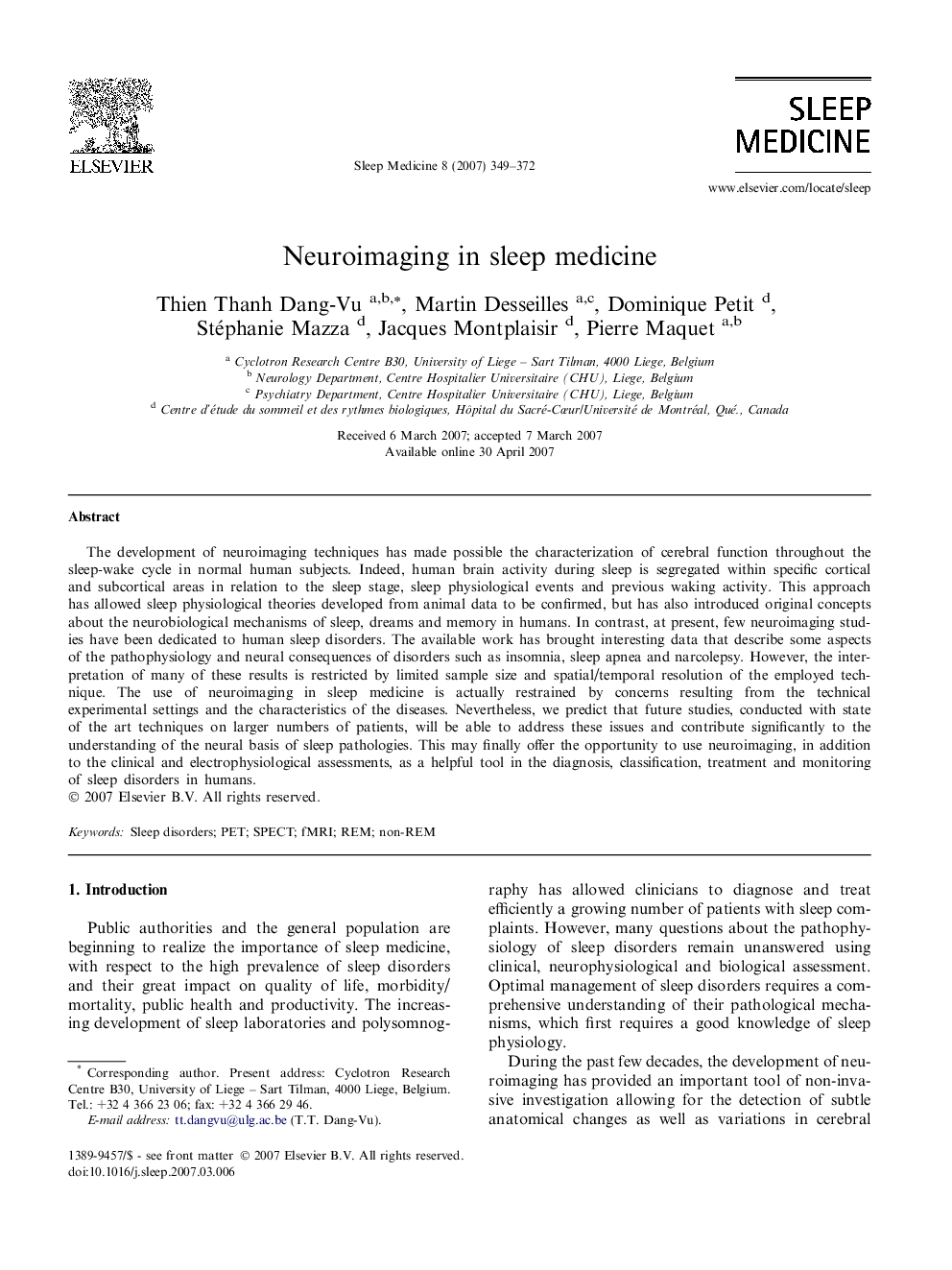| Article ID | Journal | Published Year | Pages | File Type |
|---|---|---|---|---|
| 3177438 | Sleep Medicine | 2007 | 24 Pages |
The development of neuroimaging techniques has made possible the characterization of cerebral function throughout the sleep-wake cycle in normal human subjects. Indeed, human brain activity during sleep is segregated within specific cortical and subcortical areas in relation to the sleep stage, sleep physiological events and previous waking activity. This approach has allowed sleep physiological theories developed from animal data to be confirmed, but has also introduced original concepts about the neurobiological mechanisms of sleep, dreams and memory in humans. In contrast, at present, few neuroimaging studies have been dedicated to human sleep disorders. The available work has brought interesting data that describe some aspects of the pathophysiology and neural consequences of disorders such as insomnia, sleep apnea and narcolepsy. However, the interpretation of many of these results is restricted by limited sample size and spatial/temporal resolution of the employed technique. The use of neuroimaging in sleep medicine is actually restrained by concerns resulting from the technical experimental settings and the characteristics of the diseases. Nevertheless, we predict that future studies, conducted with state of the art techniques on larger numbers of patients, will be able to address these issues and contribute significantly to the understanding of the neural basis of sleep pathologies. This may finally offer the opportunity to use neuroimaging, in addition to the clinical and electrophysiological assessments, as a helpful tool in the diagnosis, classification, treatment and monitoring of sleep disorders in humans.
